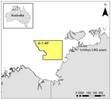With Shell’s Brent Charlie due to shut down in 2018, the supermajor has had to find a new home for its Penguins cluster subsea tieback. Elaine Maslin outlines the redevelopment plans.
 |
|
Lucy Ritchie. Photo from Devex. |
The Penguins cluster, (discovered in 1974 in Blocks 211/13a, 211/14 REST, 211/29F1 in the Northern North Sea) is 150km from the Shetland Islands in 160-170m water depth, and started production in 2003 via Brent Charlie. The Penguins cluster A, B, C, D and E fields were developed in an era where, like today, cost reduction was high on the agenda, meaning subsea meters were not installed on the manifolds and wells were not constructed to enable future intervention work, BP senior production geologist Lucy Ritchie told the Devex conference in Aberdeen last May.
Shell wants to do things differently this time. The field is set to get its own “low-cost” floating production unit – a cylindrical floating production, storage and offloading (FPSO) unit – and four new manifolds for the initial seven new, metering- and intervention-friendly wells on the Penguins fields. This will be from four new drill center manifolds, new pipelines, umbilicals and risers and a new riser base manifold. Existing wells, forming a low-pressure system of the redevelopment (with the new wells being the high-pressure system), will continue to produce via a tie-in to the new FPSO. Four additional wells could also be drilled later, depending on performance from the seven new wells. Oil will be exported by shuttle tanker, with gas exported via a new 16in gas pipeline into the FLAGS (Far North Liquids and Associated Gas System) pipeline, which transports gas to St. Fergus, Scotland. Production has been tentatively planned for 2020.
Further resource could be tapped from an area south of the cluster, subject to the results of an exploration well called Rockhopper.
The upgrade for the field follows a reassessment of the subsurface. Ritchie said that an analysis of the field, which lead to an increased understanding of the geology, showed extra potential in the area spanning the play being tested by Rockhopper to known Triassic and Statfjord reservoirs beneath the upper Jurassic Magnus and middle Jurassic Brent reservoirs currently produced. About 80 MMbbl recoverable is left in the cluster, Ritchie says, and the target is to increase recovery rates from 9-15% today, to 23%.
 |
|
Shell’s soon to be decommissioned Brent Charlie platform during a storm in 1988. Photo from Shell. |
“Statfjord and Triassic are our largest undeveloped reservoirs in the Penguins cluster and where we see quite a lot of development opportunity,” Ritchie says. “We have a number of exploration and appraisal wells that have drilled down into the lower Jurassic Statfjord and cormorant Triassic. We’ve always found reservoirs and hydrocarbons.”
Penguins A currently has two producers on it, both producing oil with no water breakthrough as yet. Two to five additional wells are due to be drilled on A, one testing the free water level.
Penguins C, D and E produce from Brent sandstones. C Block has three producers, all producing oil. D Block, split into North and South blocks, has one producer on each block, with North producing oil and South producing gas condensate. It is beneath these fields that the Statfjord and Triassic reservoirs lay. In fact, a production well, D3, was drilled to access the Triassic, but they were unable to get the liner down so it didn’t produce. Furthermore, there are environmental challenges, including braided fluvial sands.
Surveillance work has also helped the firm realize that Brent sands extend much further than thought, which has given it a new target in the C Block. As a result, Shell will focus its redevelopment plans on the Brent and Triassic with its new wells in the C and D blocks.
 |
|
Sevan’s cynlindrical FPSO concept, which is in use at Eni’s Goliat field. Image from Sevan Marine. |
The new wells will be tied into metered manifolds, with well completions designed for flexibility for interventions. In addition, drilling will take a phased approach, to gain maximum knowledge, Ritchie says.
For the topsides, Shell had considered a number of alternatives, including redeployment of an existing FPSO, a new conversion or newbuild ship-shaped or cylindrical FPSO, production via BP’s Magnus platform (10-21km from the Penguins wells), or continuing to use Brent C, beyond its cessation of production date, which would mean “extensive modifications” to the facility.
In its Environmental Impact Assessment, Shell says, “The new cylindrical FPSO option was selected as the preferred concept, based on there being no technical showstoppers identified, and it being the most suitable within the project timeframe.”



